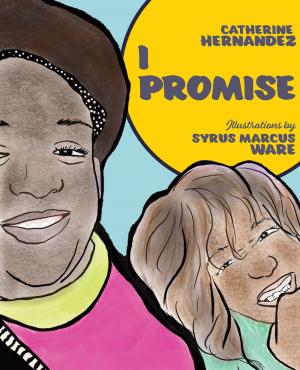
I Promise
For a children’s book that celebrates queer families, Catherine Hernandez’s latest title, I Promise, is wonderfully ordinary. There’s no glitter or rainbows. The premise of the story is familiar to most families: as a parent prepares her child for bedtime – from combing hair to brushing teeth to reading bedtime stories – she is peppered with questions. But these questions are about where other children they know came from. Her “Kiddo” asks about Jun at the library, who has so many parents. And about Miracle from swim class, who has two dads.
“Mama” answers each question with patience and sweetness: “Miracle came from a promise that every child deserves a safe home, a super comfy bed to sleep on, and one more story before nighty-night.” During an interview in December of 2018, Hernandez explained her approach to I Promise: “The birds-and- the-bees talk doesn’t make any sense to a queer family. It’s a very different story, but at the same time, why complicate it other than say that the reason why you were created was because we wanted to promise a child that you were going to love them?”
Syrus Marcus Ware’s illustrations of Mama and Kiddo, along with those of the families they discuss, mirror the simplicity of Hernandez’s message. With limited décor and a sparse use of pastels, each image is a glimpse into a family’s life through sleepy eyes.
It is this attention to the ordinary, the relatable, that also makes I Promise so unique among picture books about queer families. The families depicted are not being contrasted with those led by two heterosexual, cisgender parents. Hernandez has thrown out the birds and the bees obfuscation and replaced it with a message that is far more relatable to youngsters without being in any way deceptive. Promise made. Promise kept.
Intended for children ages three to eight, I Promise aligns well with Social Studies expectation A3.1, which states that by the end of grade two, “students will identify and describe different types of families (e.g., families with one parent, two parents, no children; same-sex families…).” Additionally, the work sits nicely with the Equity and Inclusive Education statement of the Ontario Kindergarten Program, which reads in part, “all children in Kindergarten, their parents, other family members, and other members of the school community… are welcomed, included, treated fairly, and respected.”
Gordon Nore is a member of Elementary Teachers of Toronto.